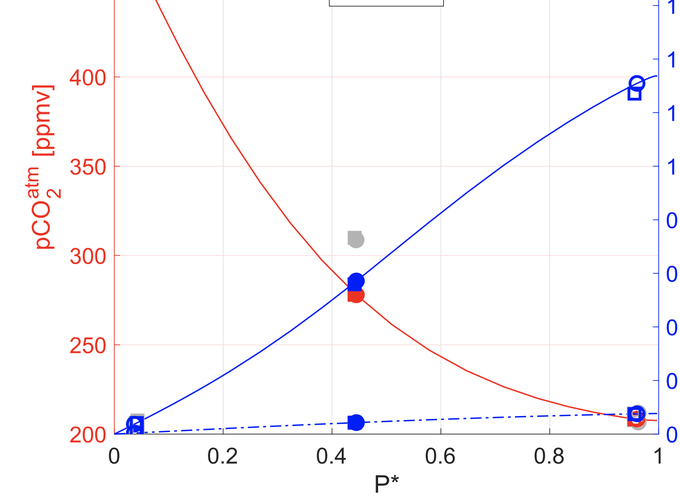A new metric of the biological carbon pump: number of pump passages and its control on atmospheric pCO₂

A new metric of the biological carbon pump: number of pump passages and its control on atmospheric pCO₂
Abstract
We develop novel locally defined diagnostics for the efficiency of the ocean’s biological pump by tracing carbon throughout its lifetime in the ocean from gas injection to outgassing and counting the number of passages through the soft-tissue and carbonate pumps. These diagnostics reveal that the biological pump’s key controls on atmospheric pCO2 are the mean number of lifetime pump passages per dissolved inorganic carbon (DIC) molecule at the surface and the mean aphotic sequestration time of regenerated DIC. We apply our diagnostics to an observationally constrained carbon-cycle model that features spatially varying stoichiometric ratios and is embedded in a data-assimilated global ocean circulation. We find that for the present-day ocean an average of 44±4% of DIC in a given water parcel makes at least one lifetime passage through the soft tissue pump, and about 4% makes at least one passage through the carbonate pump. The global mean number of lifetime pump passages per molecule, including the fraction with zero passages, is Nsoft=0.65±0.08 and Ncarb≈0.04 for the soft-tissue and carbonate pumps. Using idealized perturbations to sweep out a sequence of states ranging from zero biological activity (pCO2atm=493±1 ppmv) to complete surface nutrient depletion (pCO2atm=207±1 ppmv), we find that fractional changes in pCO2atm are dominated by fractional changes in the number of soft-tissue pump passages. At complete surface nutrient depletion, the mean fraction of DIC that has at least one lifetime passage through the soft-tissue pump increases to 69±5% with Nsoft=1.6±0.3.